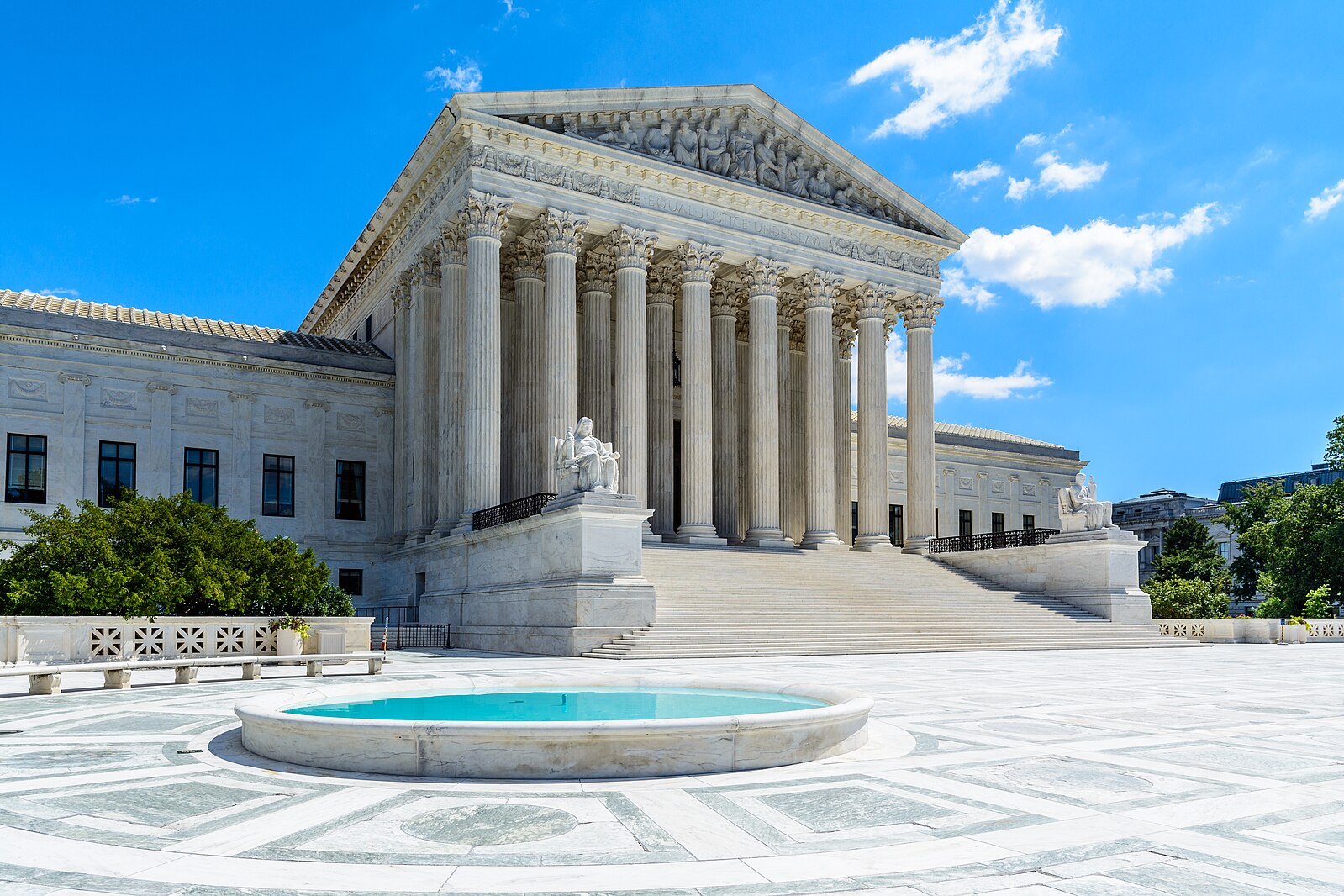First Case Filed Against Administration’s National Security Motivated Tariffs
On April 2, China hit back against the Trump administration’s recently announced steel tariffs, announcing duties on 128 different U.S. products.
Published by The Lawfare Institute
in Cooperation With

On April 2, China hit back against the Trump administration’s recently announced steel tariffs, announcing duties on 128 different U.S. products. Despite hand wringing over the nationalist tenor of Trump’s trade rhetoric up until this point, this latest tit-for-tat escalation is the first sign of conflict actually escalating into a classic trade “war.”
While it didn’t attract quite the same media attention, in recent weeks a related kerfuffle made its way quietly through U.S. Court of International Trade. On March 22, Severstal Export, a two-employee Miami importing firm, and its Swiss affiliate launched the first U.S. lawsuit against Trump’s steel tariffs. Both companies are subsidiaries of PAO Severstal, a steel company majority owned by Alexei Mordashov, reportedly one of Russia’s richest men and considered close to the Kremlin by the U.S. Treasury Department.
The plaintiffs sought a declaratory judgment, a temporary restraining order and injunctive relief, alleging that the trade actions taken by the administration were not motivated by national security concerns (their ostensible purpose), but instead were taken for the purpose of balancing the U.S. trade deficit and increasing economic competitiveness. They claim that these actions taken under Section 232 of the Trade Expansion Act of 1962 are unconstitutional because the national security justifications were pretextual, making the exercise of executive authority in excess of Congress’s delegation. As evidence of the administration’s true intent, the plaintiffs cite exemptions offered to Canada and other allies—thereby undermining the domestic floor that would have helped stabilize steel capacity utilization (the metric identified by the Commerce Department as a prerequisite for restoring national security)—and also the delta between the levied tariffs and the Commerce Department and Defense Department’s findings. In the confidential brief and during oral arguments, the plaintiffs also looked to Trump’s tweets, drawing a parallel between his tweets on trade and his anti-Muslim tweets showing the true intent of his travel ban (a comparison I have made). On April 5, Judge Jane Restani of the Court of International Trade denied the plaintiffs’ request for a preliminary injunction.
Restani employed the court’s four factor test to determine the propriety of a preliminary injunction, considering: whether the plaintiffs would suffer irreparable harm without the requested injunction; the plaintiffs’ likelihood of success on the merits; whether the balance of hardships favors the plaintiffs; and whether the public interest would be served by the injunction. Without diving too deeply into each factor, the following portions of the court’s analysis—both in Restani’s opinion and during oral arguments—are worth highlighting.
First, the government had distinct advantages in this suit. As Tim Meyer and Ganesh Sitaraman wrote on Lawfare, the scope of the president’s authority in these matters is broad. With roots in previous Eisenhower administration policies from the height of the Cold War, Section 232 was written to give the president similar powers as those enjoyed by his counterparts in adversary countries; the president could impose import restrictions of any type and duration anytime the national security is threatened. The statute defines security expansively, including within its scope threats to economic welfare, industrial competitiveness and human manufacturing know-how. While this authority has been scarcely used over the last 70 years, it seems tailor-made for Trump’s policy preferences. Indeed, in oral arguments, Restani gave a sense of the hurdles faced by plaintiffs, likening their arguments over tweeting activity to wanting a “mind reader.” As reported by Inside U.S. Trade, “Restani questioned how the court can analyze the ‘inherent meaning’ of Trump's statements. For example, Restani said Trump could have meant that ‘to the extent that Congress allows me to apply [Section 232] tariffs in a way set forth in the statute -- tariffs are my baby’.”
In evaluating the Plaintiff’s likelihood of success on the merits, questions of justiciability proved informative. As Shannon Mercer and Matthew Kahn predicted on Lawfare on March 13, the government led with the objection that discretionary presidential tariff determinations aren’t reviewable under the Administrative Procedure Act. As the motion put it, “the President is not an ‘agency’ for purposes of the APA.” Mercer and Kahn also noted that Section 232 provides no judicial or administrative law remedy. That was March 13. By March 19, the Commerce Department finalized rules that allowed importers to apply for exclusions from the steel tariffs if a specific steel product “is not produced in the United States in a sufficient and reasonably available amount, is not produced in the United States in a satisfactory quality, or for a specific national security consideration.” The Justice Department argued in their motion to dismiss that an APA challenge would only be viable in this case if Severstal had first applied for this exclusion and had subsequently been denied. But Severstal’s claim was a constitutional one, as the court notes throughout the opinion, so a challenge to Commerce’s exclusion process would not address those concerns, and Severstal would be unlikely to qualify for such relief in any event, as the firm does not maintain that their product is necessary to fill supply shortages or advance national security.
Restani rejected the government’s justiciability argument. First, she noted that plaintiffs did not challenge the president’s actions under the APA and were well within their rights to allege that “the President seriously misapprehended, and thus exceeded, his statutory authority,” even if the exercise of discretion in itself were not reviewable. Restani then cited Corus Group v. ITC to establish the grounds upon which the executive’s authority here is reviewable: “where statutory language limits the President, the court may review the executive’s actions for ‘clear misconstruction’ of such limiting language.” If such a misconstruction were to be found—for example, if there were evidence that the president had not considered national defense requirements—the administration would have unconstitutionally usurped Congress’ exclusive authority to set the terms of trade policy. The Justice Department argued that the steel tariffs were not only constitutional but an example of legitimate presidential power exercised “at its maximum.” Citing the Youngstown v. Sawyer framework, the government argued that the steel tariffs were an unambiguous example of the executive acting pursuant to an express congressional authorization. Under longstanding trade law jurisprudence, courts have upheld executive discretion “without probing Presidential motives, scrutinizing tweets, or scouring the Internet for ulterior motivations.” However, a case cited as most apposite by the Justice Department involved narrower authorities than Section 232. In that case—Silfab Solar, Inc. v. United States, injunction denied on March 5—plaintiffs only argued that the expert agency’s recommendation to the president for solar panel safeguards was procedurally deficient.
As the case progresses, discerning intent may end up being a more important task in the present case because Section 232 leaves national security determinations with the White House (and apparently allows consideration of options not even recommended by the Commerce Department).
Another important issue discussed is the procedure required by Section 232. Justice argued that Section 232’s only requirement was that Commerce consider national security and economic welfare, transmit a report to the president, and the president then make a determination. With the Jan. 11 Commerce recommendation and March 8 presidential proclamation, that statutorily required sequence of events was met. Restani was skeptical of this interpretation of the statute. For one, it is so general that it would allow Commerce to send a recommendation for tariffs on dog food and for Trump impose tariffs on cat food, merely because the action followed the receipt of the recommendation. As Restani put it in oral argument, “I’m not sure just getting a report is the answer.” In Thursday’s opinion, she went further, pointing to the long list of factors related to economic welfare in Section 232 that Congress asked the president to consider before imposing tariffs. The exclusion process (by exposing the domestic steel industry to the imports supposedly harming national security) raised a “credible question as to whether the President misapprehended [his] authority.”
Instead of the 24 percent global tariff on steel or 53 percent tariff on a select group of 12 countries, Trump imposed a 25 percent tariff on what now amounts to less than a third of total imports. The president may have substantial discretion in a true national emergency (and it’s reasonable to include industrial health in that definition), but it’s not unthinkable that courts could help draw a clearer line when the president’s actions don’t even further the industrial policy ends. Restani did not need to resolve this issue in the ruling on the injunction request, but she did note that plaintiffs had a low chance of success on the merits unless they could prove Trump’s statements were truly out of line with specific factors in Section 232. In sum, the court found that the plaintiffs’ showing of irreparable harm was insufficient and that the plaintiffs are unlikely to succeed on the merits. Moreover, the court said the balance of hardships and public interest do not overcome the deficiencies in the aforementioned factors. Ultimately, the court decided the plaintiffs were unlikely to succeed on the merits because Trump’s tweets and other statements would not be “sufficient on their own to underpin a credible case that the President has clearly misconstrued his authority.”
In proceedings to come, expect the plaintiffs to flesh out their argument (which Restani deemed “credible”) that the tariff exclusions (if not the tweets) frustrate Trump’s ostensible underlying security and industrial policy goals. Regardless of how this particular case is resolved, expect more calls for Congress to rewrite Section 232 to cabin executive discretion. Ironically, the most lasting contribution of Trump’s impulsive economic nationalism may be a dismantling of the tools that another president might more skillfully use to advance a reasonable cause. Perhaps more ironically, it may be Russian oligarchs that help deliver the fatal blow.


.jpg?sfvrsn=407c2736_6)


